CARE broadens connection to the whole world
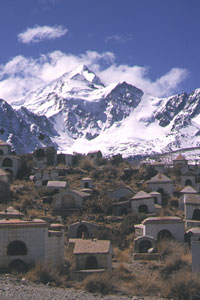
19,996 foot Huayna Potosi and graveyard, Cordillera Real, Andes
Their shoes and feet strike me most powerfully. First are the sandals – ancient black, brittle plastic things – most of which have disintegrated straps and seem to be held on by the grip of the toes alone. The feet and toes themselves are strangely un-human – tanned black by the cold and dirt, deeply crevassed, flattened. I try to imagine what those feet would feel like, knowing that it’s a only a trick of fate that I happened to be born into a time and place in which I’d be able to own sturdy boots.
I’m standing with six Aymara Indian men at about 14,200 feet above sea level at a remote point in the Andes of northern Bolivia. I shift my gaze from their feet to the stunning, huge, physical beauty of the place, and to their village a thousand feet below – a collection of mud brick houses glinting as the late afternoon sun reflects off the corrugated steel roofs.
We’re at the natural spring where the community’s new water and sanitation system begins. The men are discussing their progress in building the system in with an engineer from the development organization CARE. CARE’s challenge is this case is to put a simple technical system (water and latrines) into a village of 120 families. The goal is that 80% of the houses scattered over the steep slopes below will have a water tap and a latrine at the project’s completion.
For a number of years I’ve been a volunteer for CARE here in the U.S., and have come to understand and be perplexed by a central challenge that faces organizations like CARE. Why should we in the Northwest care about poor Bolivians? Why should our money go to the people of Bangladesh? Somalia? Shouldn’t we care for “our own” first?
I look at the dark faces across from me. Are they “my own”?
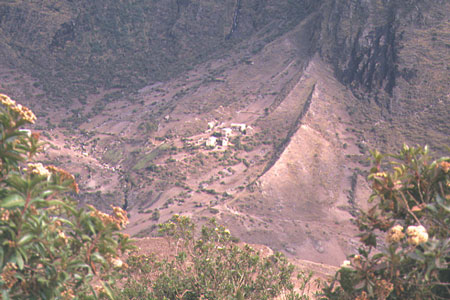
The typical high Andean town where CARE works
I’ve decided that they most certainly are. A lot of conventional boundaries – whether geographic, ethnic – are in my mind artifacts of memory and historical habits of thinking. They’re artificial constructs that can allow us to define away the needs and humanity of those living outside of those boundaries. While we may always need to cut and divide the world to allocate resources and organize our social systems, we’ve got to be really careful as to the meaning we give to these divisions.
There’s also another, more practical argument for caring about those who are more, rather than less, different. The people of Bolivia – along with a hundred other countries in the world – are generally far poorer in the aggregate than the people of America. When this cliché is felt by direct experience, it becomes profound.
Even confronting America’s substantial problems head on, and in thinking about the complex debates over the nature of our intractable social problems, I believe these pale when confronting the enormous mass of need in the world for those basic material amenities that the great percentage of us here already have.
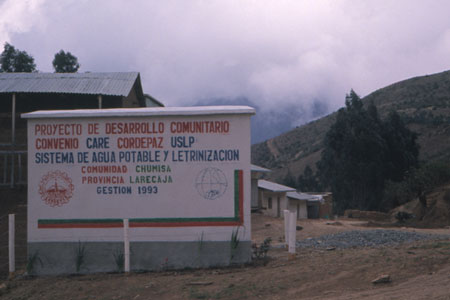
Announcing the "Drinkable Water and Latrine project
And contrary to our deepest problems, which – at least at this point in time – we simply do not know how to solve, CARE deals with a much simpler class of problems in which solutions are at hand. Consider the water and sanitation system I’m inspecting.
A concrete holding tank will collect water from the spring where we’re standing. Via a system of pipes and tanks that will brake the pressure, the water will flow steeply down the mountain side, where it is distributed to those households that have signed up to participate and have paid 60 Bolivianos ($15) as the indication of commitment. Each family ends up with a water tap and the white-washed, new latrine.
CARE’s systems is designed to deliver 50 liters per day per person, which can be contrasted with our average individual use here of 1200 liters per person, per day.
CARE doesn’t just give the system to the village it is helping. In addition to providing the labor to build the system, the village must manage and repair the system when CARE is gone. A good percentage of the work becomes assistance in helping the community to set up forms of simple administration and community organization such that the new systems can be managed and repaired.
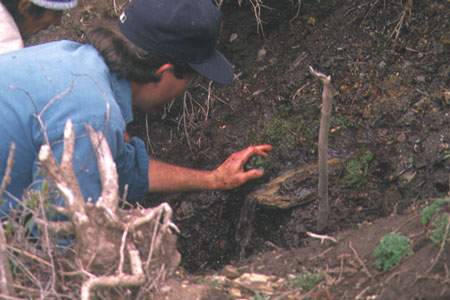
A water source is identified high above the town
This usually implies a tariff system for the upkeep of the system, a new form of organization – the “water committee”, and training in a variety of new administrative procedures such as purchasing of parts, basic accounting, etc.
For $10,000 – the rough cost per village – one hundred families will have water and latrines. They will also gain an enormous improvement in family health and comfort from the twin improvements of drinkable water and a sanitation system. Families will no longer need to carry pails of contaminated water from the river below.
Finally, I return to the basic imaginative challenge: What are these Aymara lives really like? While the details are extraordinarily opaque, I know that the exercise of just trying is important work in furthering my own humanity.
For at some deep level – beneath all the rhetoric and political correctness – “multi-culturalism” is nothing more than working on ones capacity to relate, to empathize, to place oneself in the shoes of others who are different. Work on these tasks, I tell myself, and everything else will fall into place.
When I give time to organizations like CARE, I’m handed a marvelous chance to expand my horizons, and to broaden my connection to the world itself.
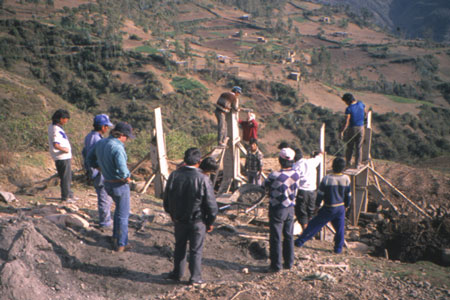
Building an interim water-holding tank
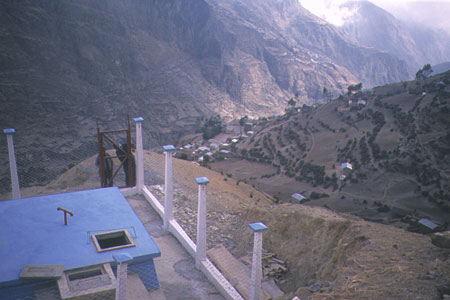
Completed tank - gravity takes the water to the town below
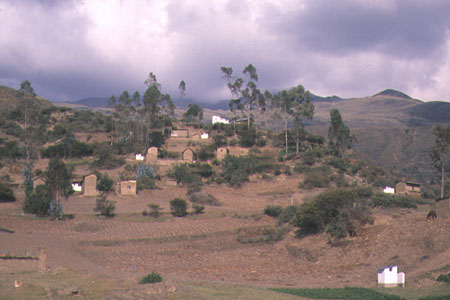
Houses and latrines!
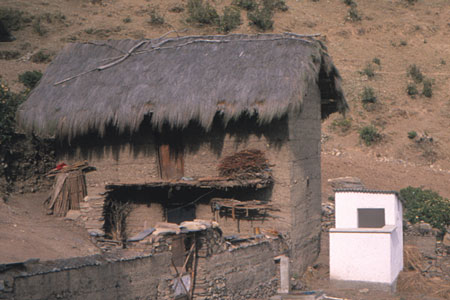
Latrines and water pipe enhance life immeasurably
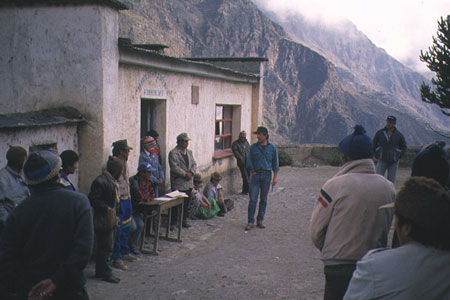
Community meeting to discuss maintenance of the water system